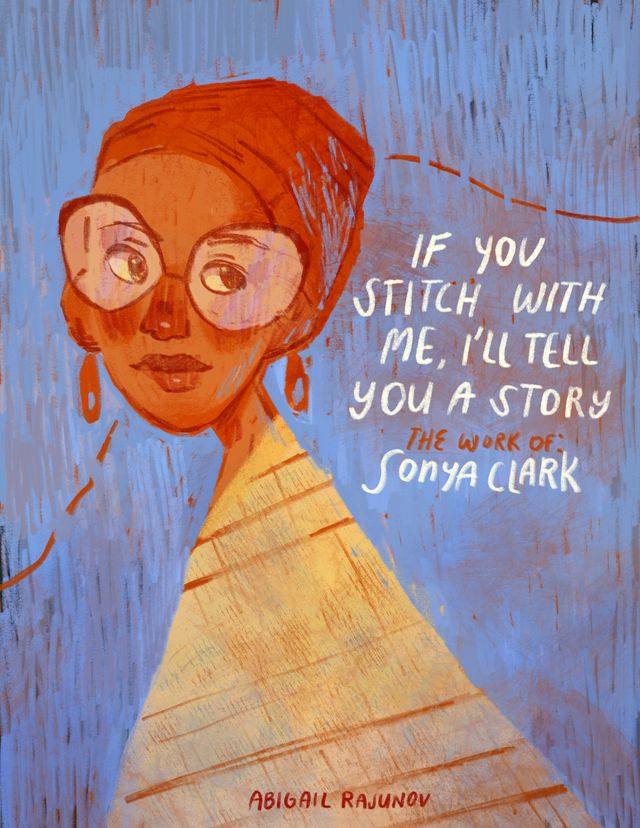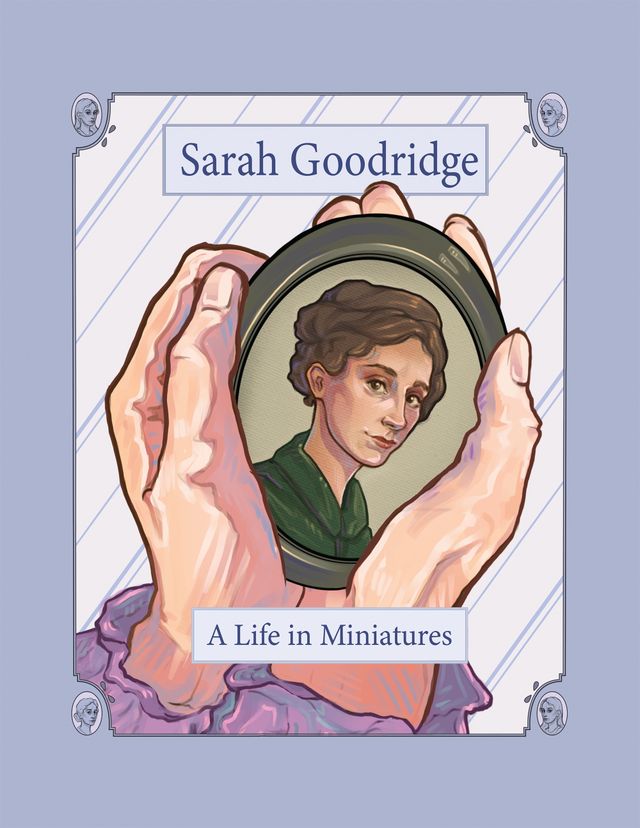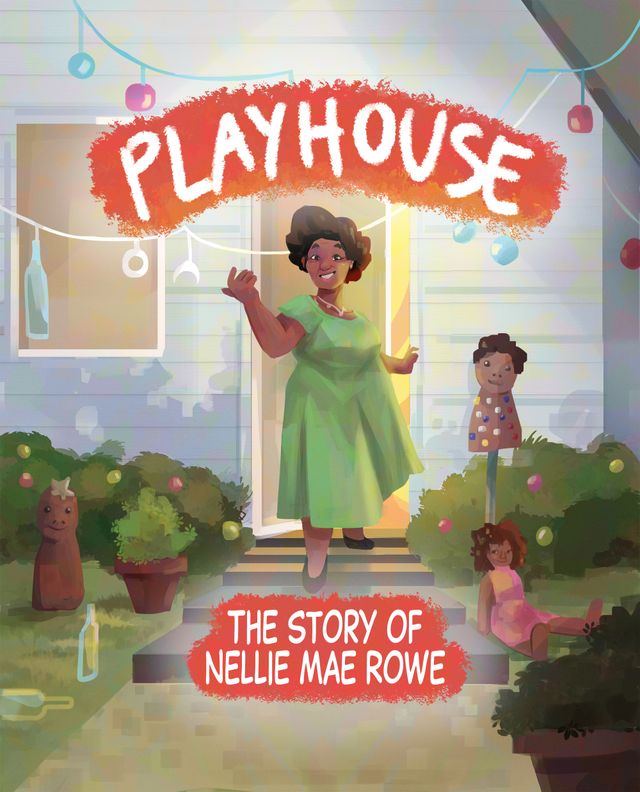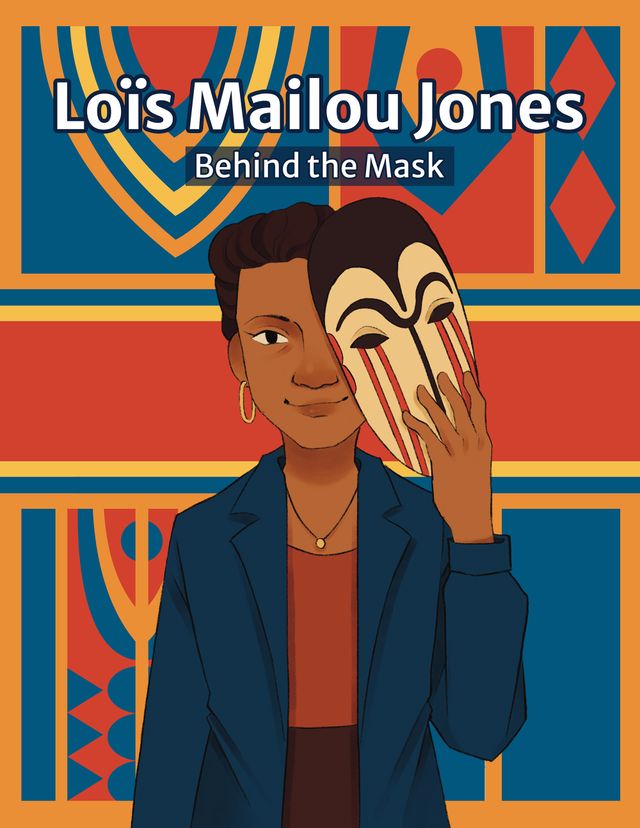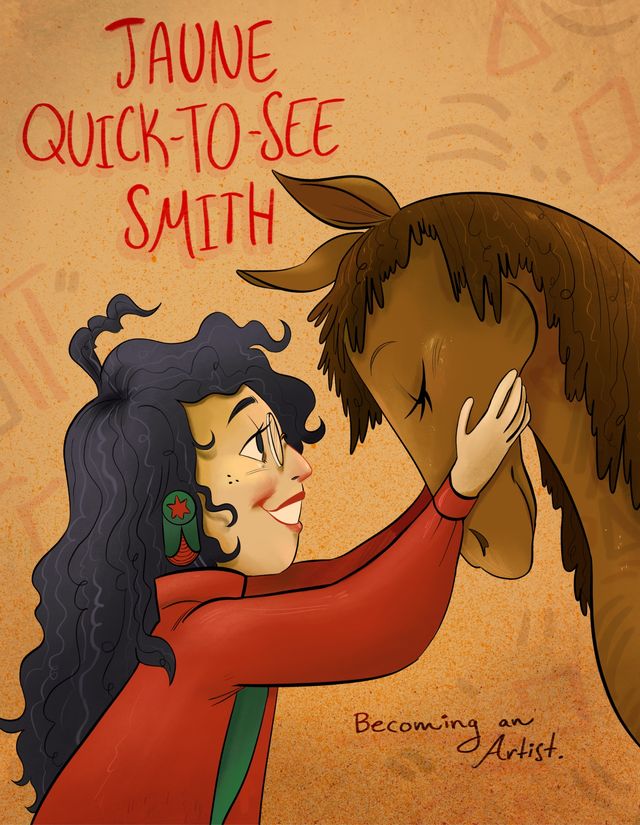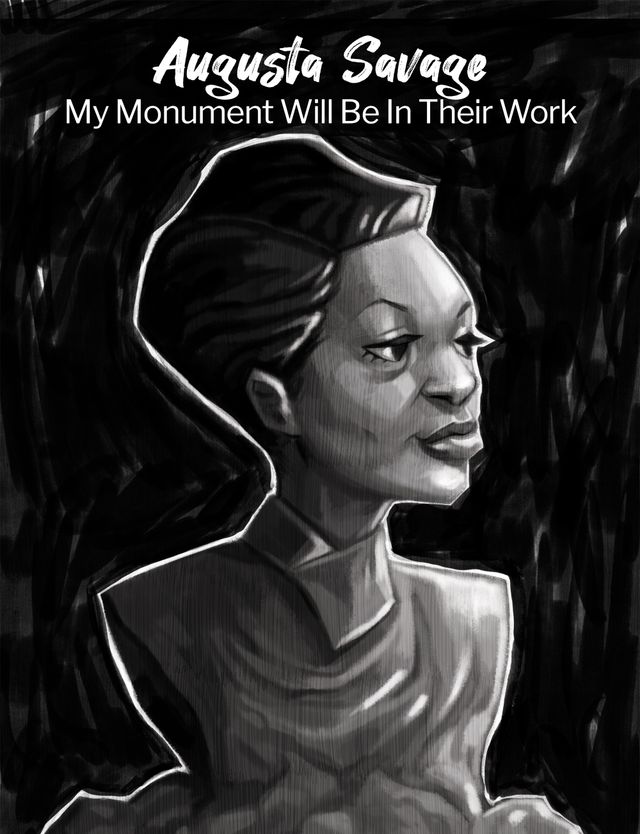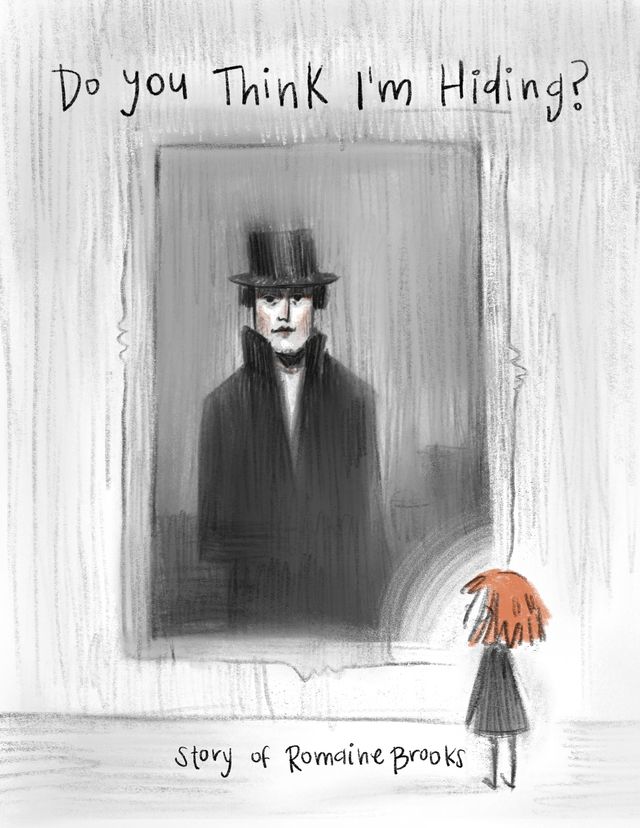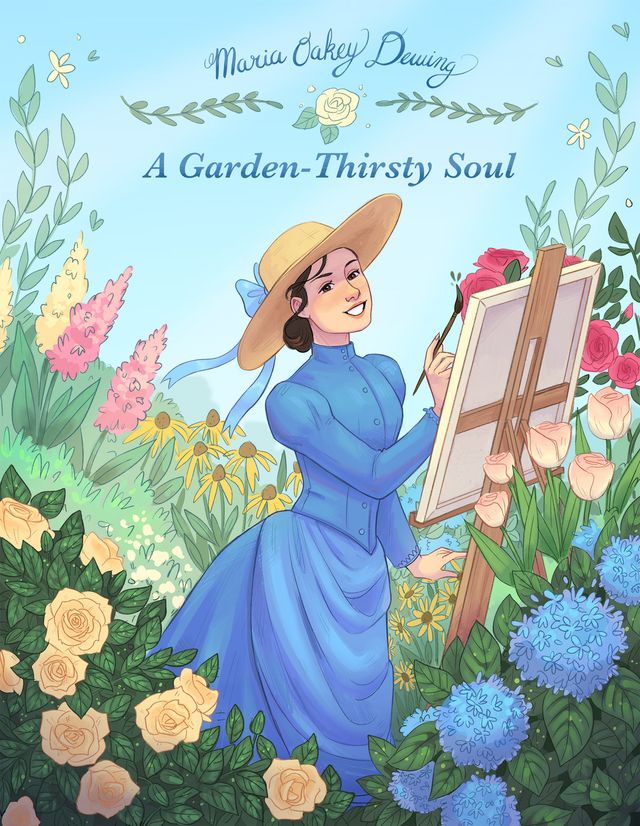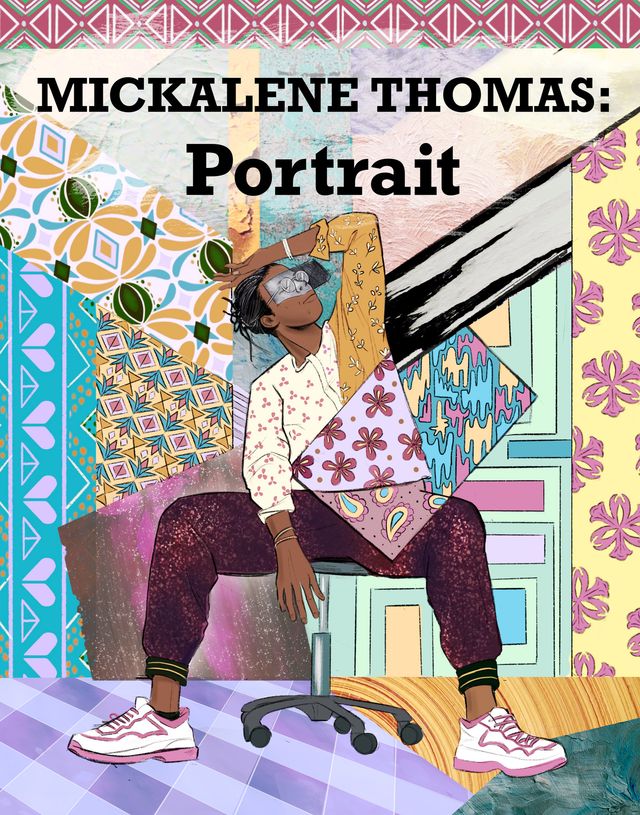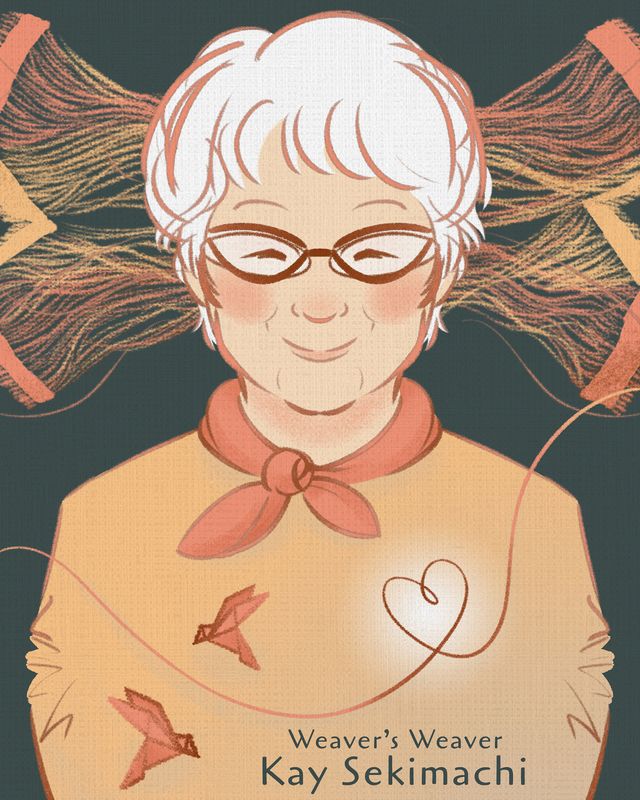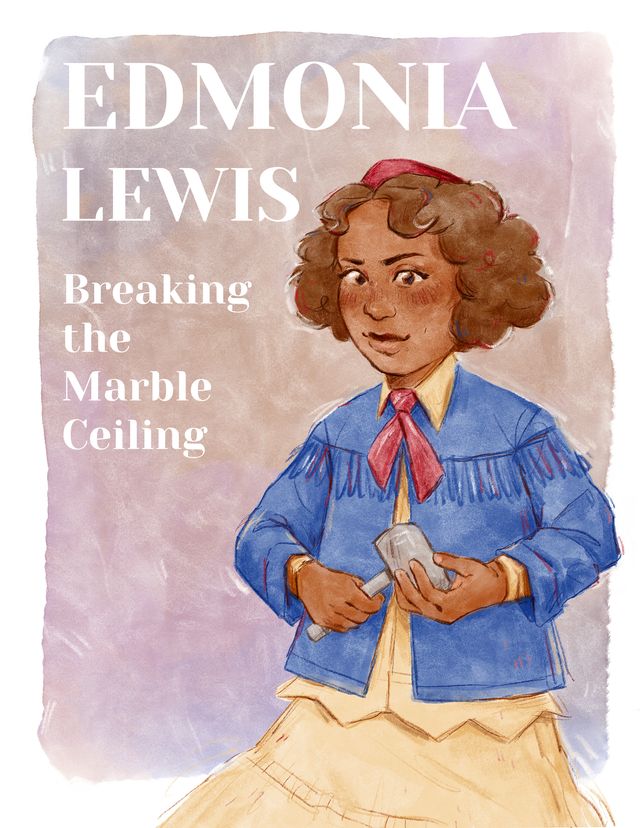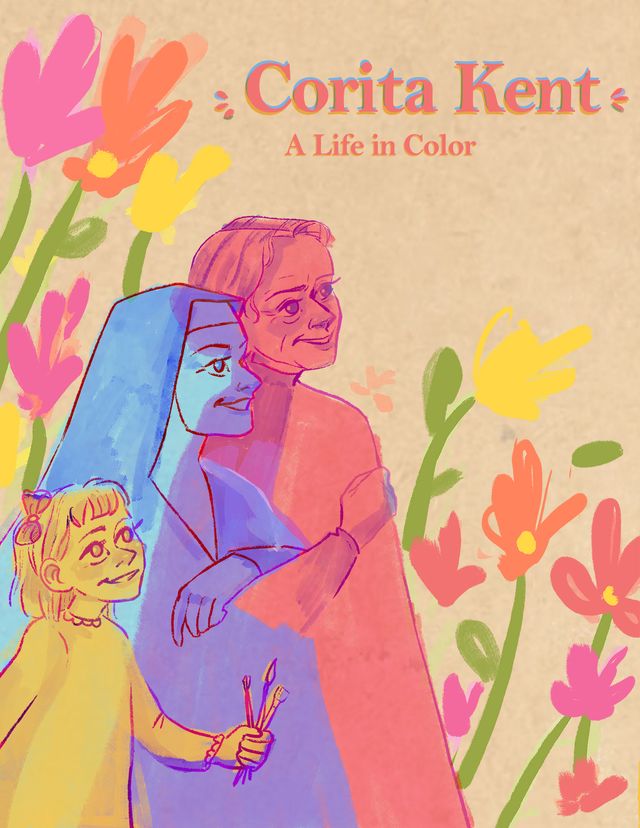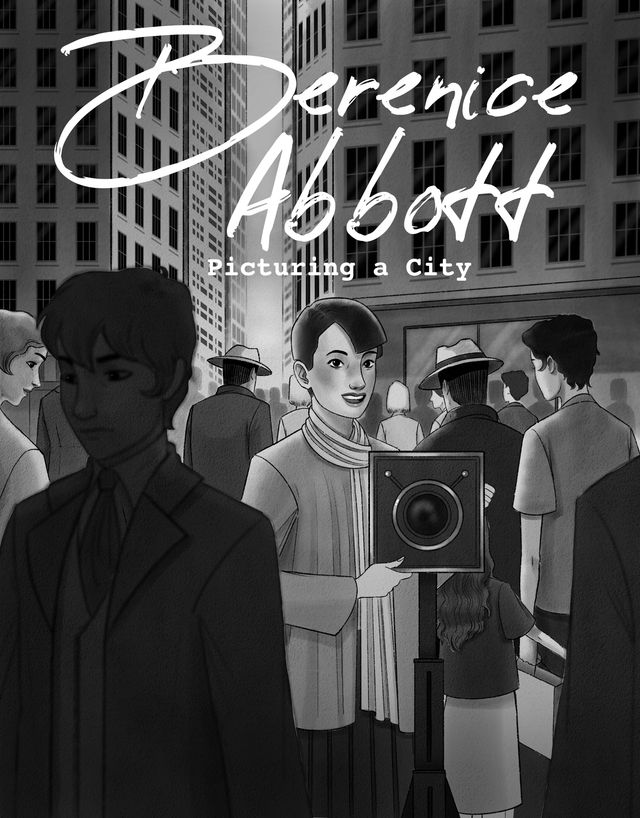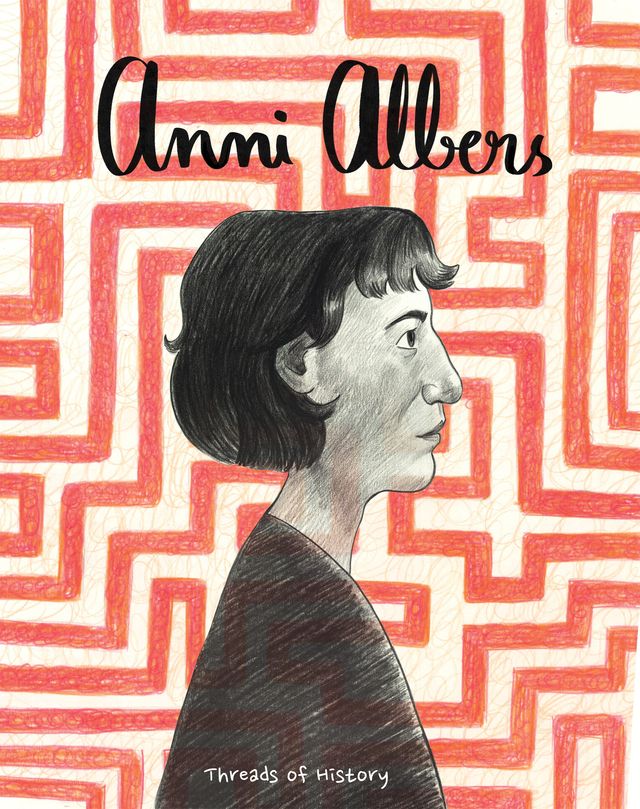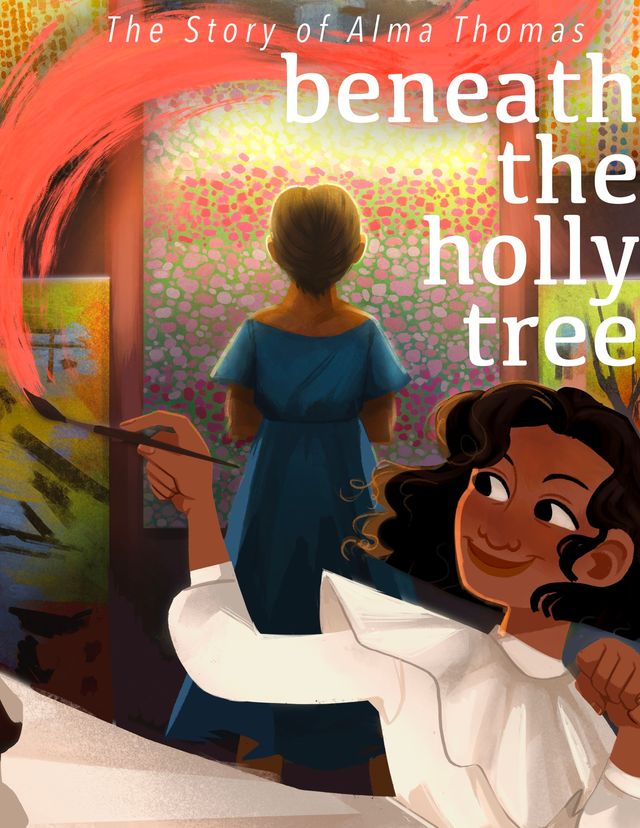An Overview
Having witnessed the Vietnam War, Tiffany Chung hopes to illustrate the effect of war on people and tell a complete story. Chung traced her father’s wartime journey in search of those memories erased from historical records. She describes her works as “the protest against this politically driven historical amnesia.”
This comic is part of a series Drawn to Art: Tales of Inspiring Women Artists that illuminates the stories of women artists in the collection of the Smithsonian American Art Museum. Inspired by graphic novels, these short takes on artists’ lives were each drawn by a student-illustrator from the Ringling College of Art and Design.
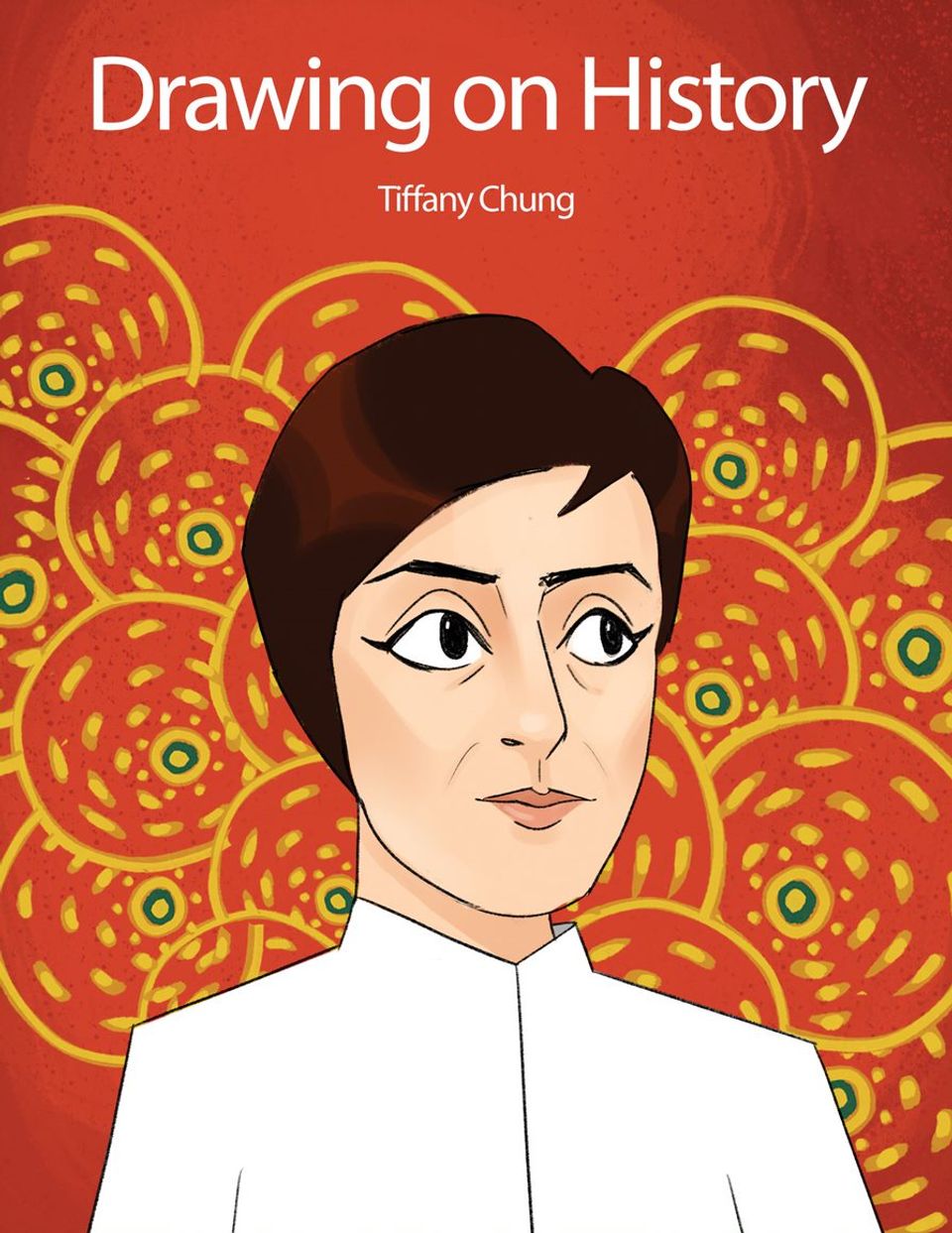
Tiffany is illustrated against a bright red background with golden circles designed behind her. The circles overlap each other and include golden specs and a green center. Tiffany is shown from the chest up; she is wearing a white coat with a small turtleneck. She is gazing to the right, but we see her whole face. Her hair is dark brown and cut very short, with a short strand grazed over her forehead. Above Tiffany is white text that reads: “Drawing on History”. Underneath, there is a subtitle that reads “Tiffany Chung.”
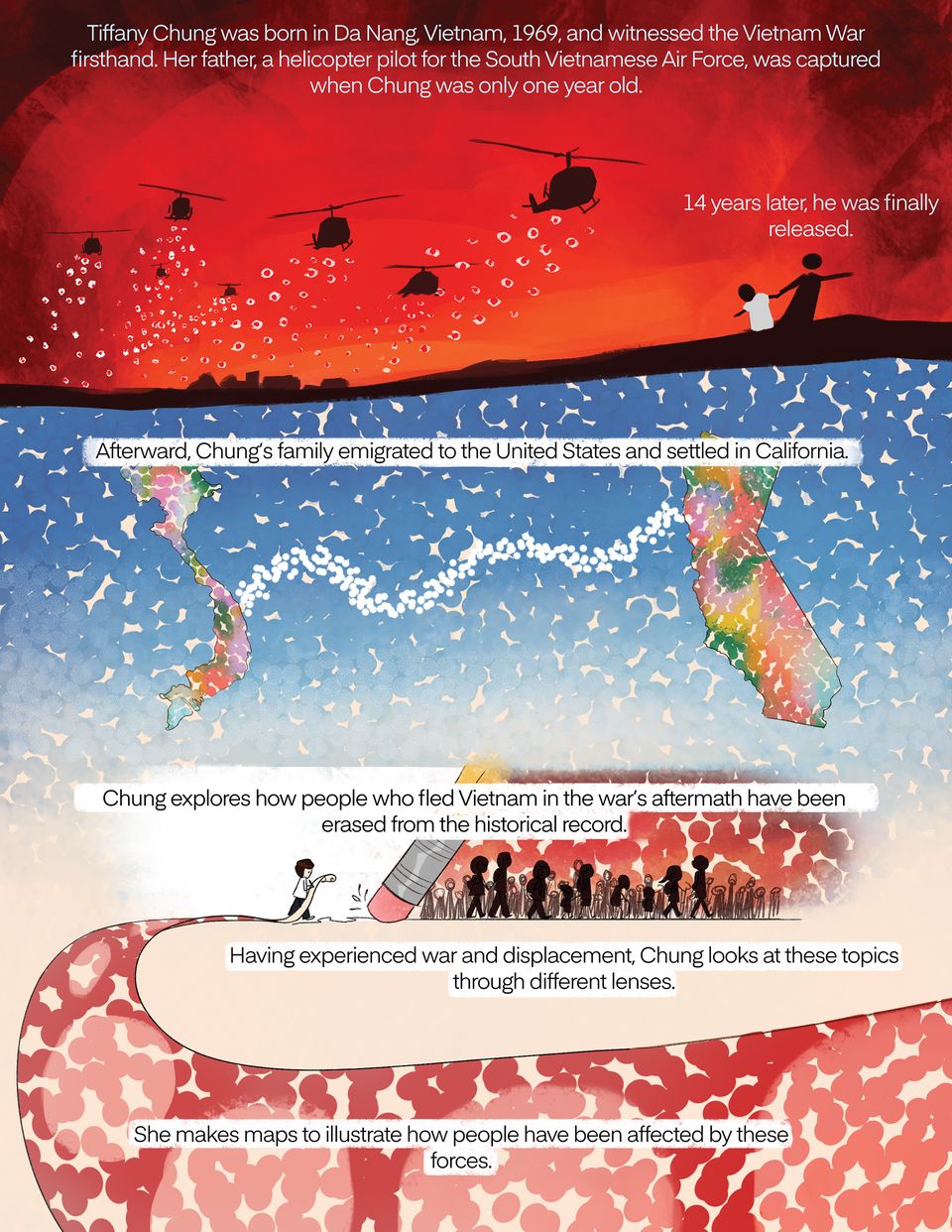
The page is broken equally into three horizontal panels. In the top panel, there is a dark red sky with a fleet of silhouetted helicopters in the distance. The helicopters are dropping a large number of bombs onto a city on the distant horizon. The bombs are stylized to be white circles with red circles in the middle, similar to motifs found in Tiffany’s work. In the foreground, there are two simplified small figures; one larger figure in black, who is grabbing the hand of a smaller figure in white. The two appear to be running away from the fleet of helicopters. At the top of the panel, the text reads:
"Tiffany Chung was born in Da Nang, Vietnam, 1969, and witnessed the Vietnam War firsthand. Her father, a helicopter pilot for the South Vietnamese Air Force, was captured when Chung was only one year old."
Above the two figures, there is a sentence that reads:
"Fourteen years later, he was finally released."
In the middle panel, there is a blue dotted pattern in the background. The dots are densely packed together, in a way that they appear to be merging with each other. The blue also gradients from dark to light moving from top to bottom. To the left of the panel, there is an outline of Vietnam. To the right, there is an outline of the state of California. Connecting the two is an organic line consisting of multiple small white dots. Inside the shapes of Vietnam and California, there is a similar dot pattern utilized. There are pink, yellow, green, and teal dots that bleed together to form a watercolor-like look. Above the two countries, there is a white text box. There is text that reads:
"Afterward, Chung’s family emigrated to the United States and settled in California."
In the bottom panel, a small figure of Tiffany is holding a map that swirls down and widens as it approaches the bottom of the frame. Inside the map is a red dot pattern similar to the blue dot pattern in the panel above; the dots are small, arranged randomly, and bleed together. To the right of Tiffany is the eraser of a giant pencil that is erasing a crowd of silhouetted people. Behind the crowd is the same red dot pattern found on the map. There are lines of text from top to bottom that read:
"Chung explores how people who fled Vietnam in the war’s aftermath have been erased from the historical record. Having experienced war and displacement, Chung looks at these topics through different lenses. She makes maps to illustrate how people have been affected by these forces."
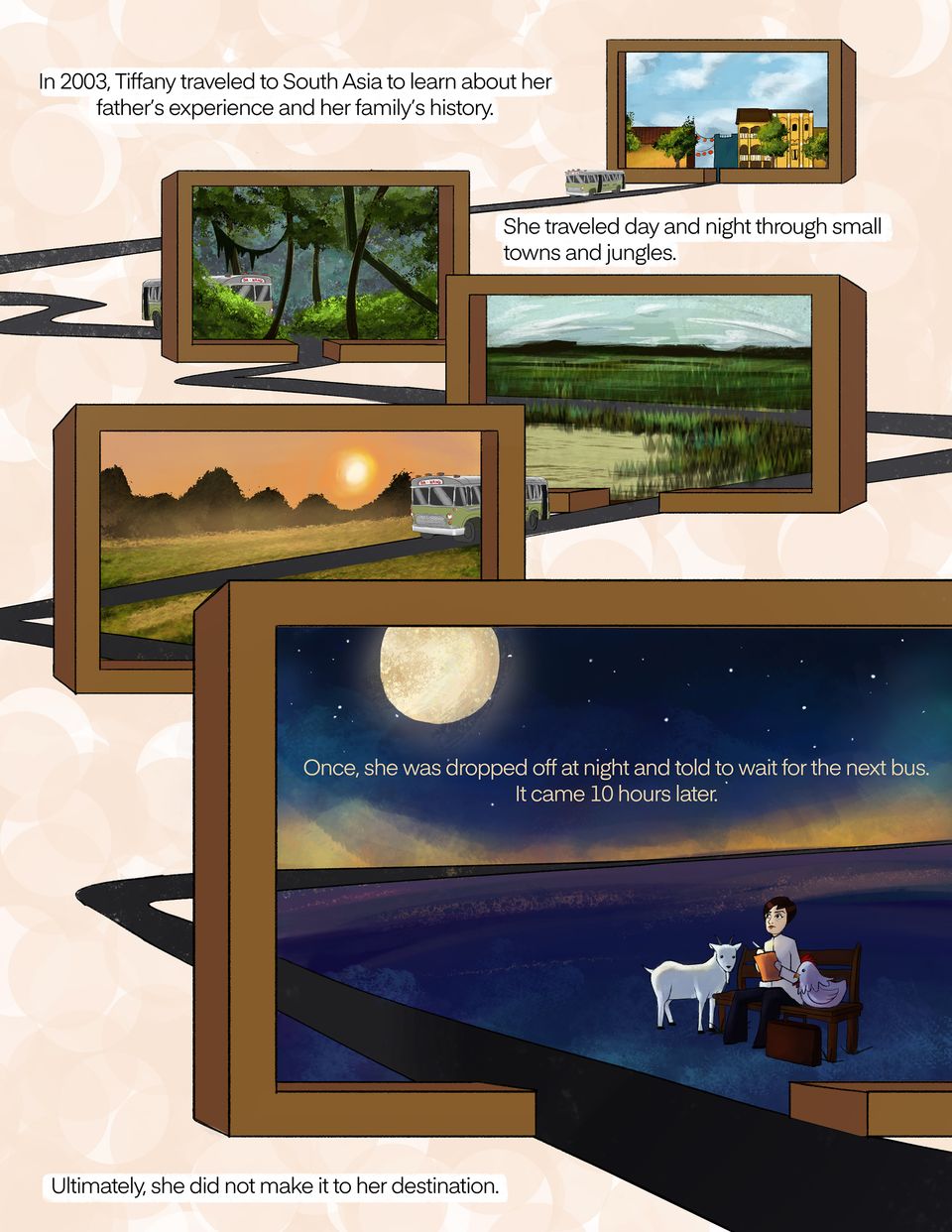
Against a nude background, there is a winding, zig-zag road that gradually gets closer to the viewer. In the distance, there is a small bus that is seen traveling down the road, entering different picture frames drawn along the road. There are five picture frames scattered along the road, each with paintings of landscapes with the road going through them. The pictures get larger as the frames get closer to the viewer. There is a painting of a suburban apartment complex, a jungle scene with bending tree branches, a field of grass under a blue sky, a sunset over a flat grassland, and finally, a night time scene with the moon illuminating Tiffany sitting on a bench next to a chicken and a goat. Winding down the page, there is text that reads:
In 2003, Tiffany traveled to South Asia to learn about her father's experience and her family's history.
She traveled day and night through small towns and jungles.
Once, she was dropped off at night and told to wait for the next bus. It came 10 hours later.
Ultimately, she did not make it to her destination.
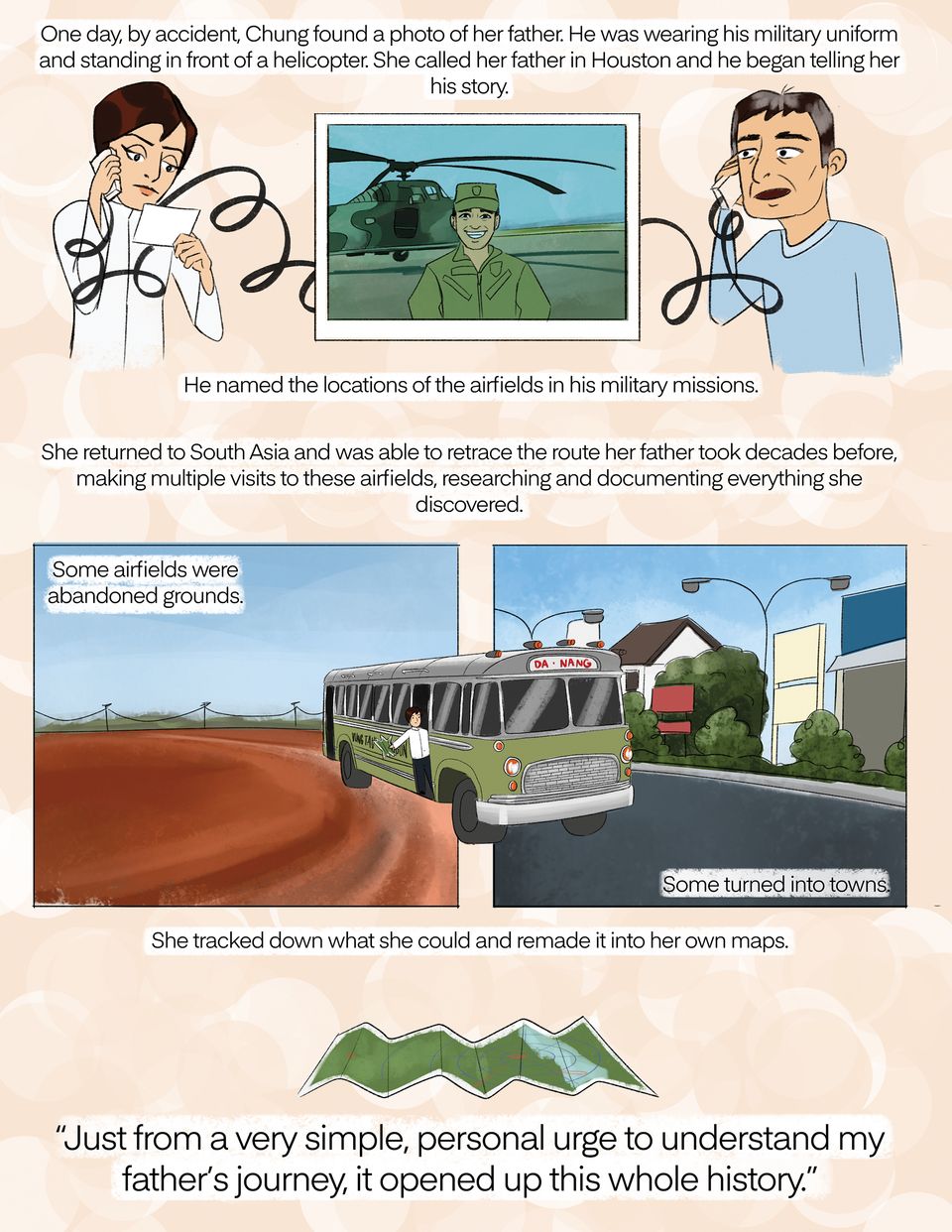
Near the top of the page, there is a waist-up illustration of Tiffany holding a wired landline phone in her right hand, and a small piece of paper in her left. The wire from the landline swirls in front of her and to her right, connecting to a phone that her father is holding to the left of the page. Her father is also illustrated form the waist up. He looks to be around middle-age, with slightly gray hair and a few wrinkles on his face. He is wearing a blue sweater. Talking into the phone, he gazes to the left, towards Tiffany. In between the two, there is an illustration of an old army photo of Tiffany’s father. He is smiling at the camera wearing his green army uniform. Behind him, there is a camouflage-patterned helicopter. Above the illustration, there is a line of text that reads:
One day, by accident, Chung found a photo of her father. He was wearing his military uniform and standing in front of a helicopter. She called her father in Houston and he began telling her his story.
Below the illustration, there are lines of text that read:
"He named the locations of the airfields in his military missions. She returned to South Asia and was able to retrace the route her father took decades before, making multiple visits to these airfields, researching and documenting everything she discovered."
Below the lines of text, there are two panels with a three-quarter view of a bus overlapping them in the middle. Tiffany hangs out the door of the bus. In the left panel, there is a brown field below a blue sky and a line of telephone poles. There is text in the upper-left corner that reads:
"Some airfields were abandoned grounds."
In the right panel, there is a street view of a suburban town. Pictured here are large bushes covering signage and white houses. The same blue sky stretches above this landscape. In the lower right corner, there is a line of text that reads:
"Some turned into towns."
Under the two panels, there is a line of text that reads:
"She tracked down what she could and remade it into her own maps."
Under this line of text, there is an illustration of an unfolded, green map lying down. Underneath that image, there is a quote from Tiffany:
"Just from a very simple, personal urge to understand my father's journey, it opened up this whole history."
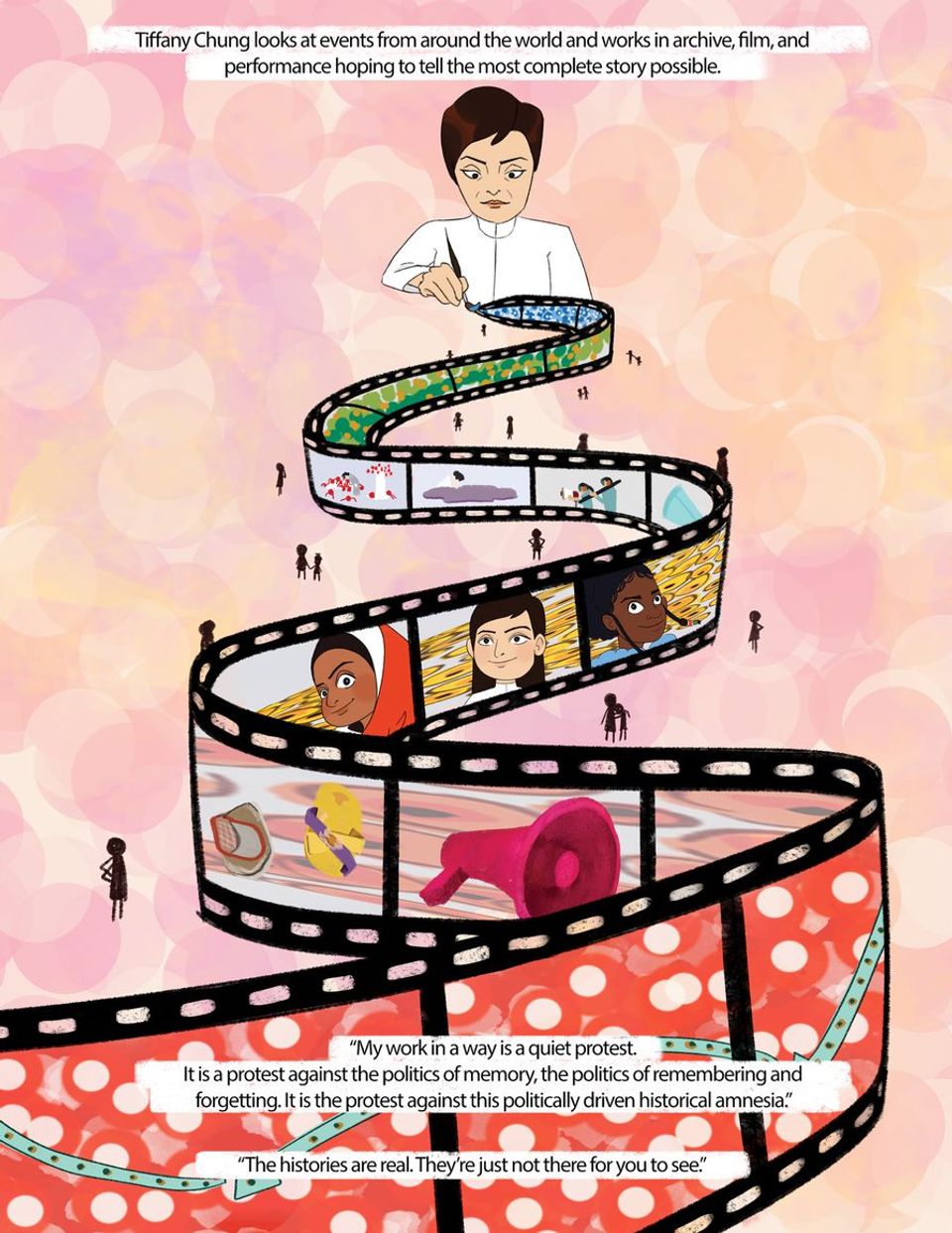
The page starts with one line of text:
Tiffany Chung looks at events from around the world and works in archive, film, and performance hoping to tell the most complete story possible.
Near the top of this page, there is an waist-up illustration of Tiffany with a paintbrush in her right hand. She looks down at a roll of film that seems to unravel from the point of her paintbrush, gradually getting larger as it flows to the bottom of the page. On this roll of film are various images of Tiffany’s work. In the first section, there is the recurring dot pattern, first in blue, then in green and yellow. In the second section, there are very simply recreations of installations created by Tiffany. In the middle of the film strip, there are portraits of three young girls: one dark-skinned Muslim girl with a red hijab, one Asian girl that resembles a young version of Tiffany, and one African American girl with dark skin and coiled hair tied back into a bun. Approaching the bottom of the page, there is an image of a hot pink megaphone. Finally, near the bottom of the page, the now large film strip contains a red and white dot pattern, with a thin teal strip running through it. Around the entire strip of film, there are small black silhouettes of people viewing the work on the strip.
In front of the strip near the bottom of the page, there is text that reads:
“My work in a way is a quiet protest. It is a protest against the politics of memory, the politics of remembering and forgetting. It is the protest against this politically driven historical amnesia.”
“The histories are real. They’re just not there for you to see.”
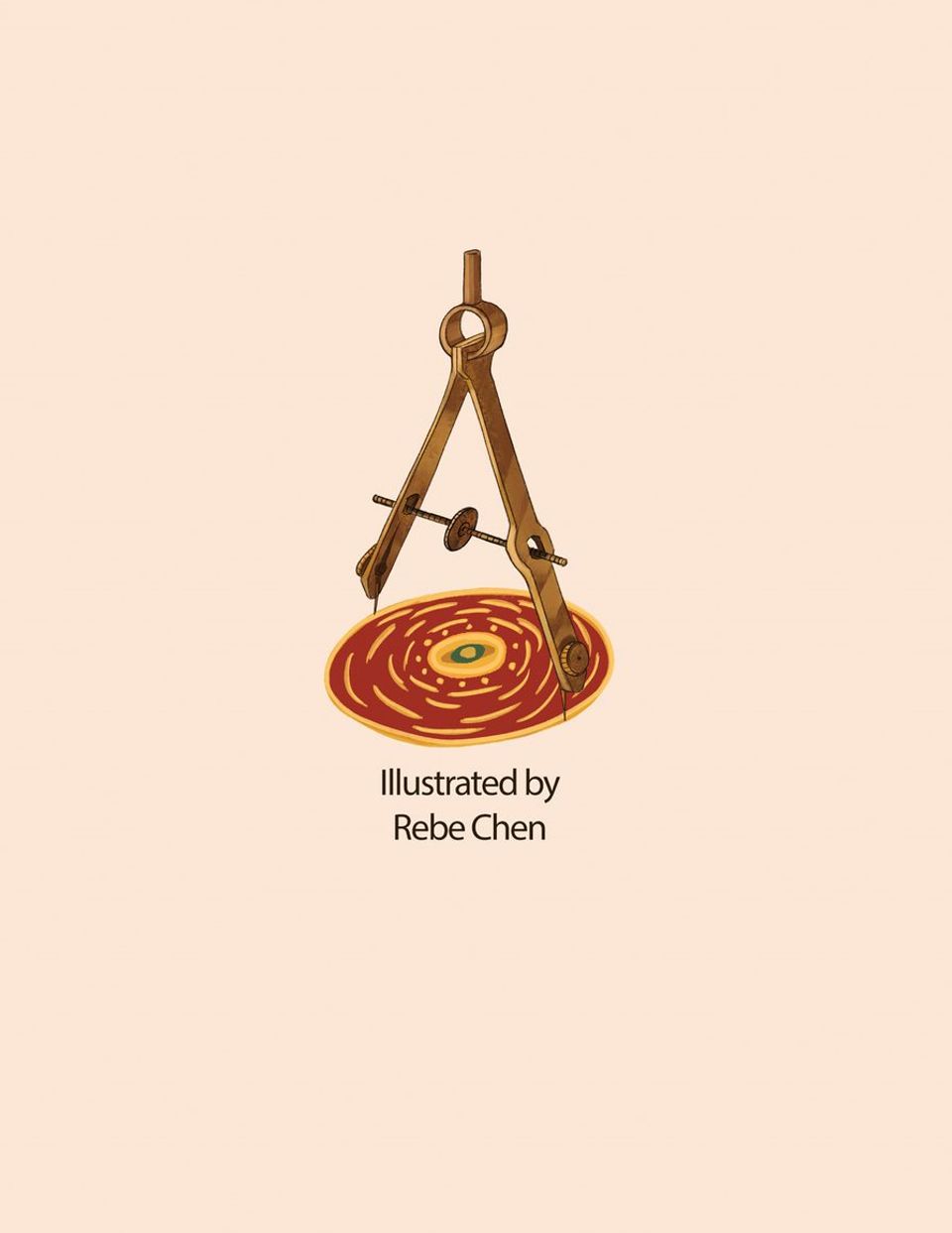
In the center of a page, there is a golden drawing compass that circles around a red dot with golden dashes and a green center. Underneath the illustration, there is text that reads:
Illustrated by Rebe Chen














